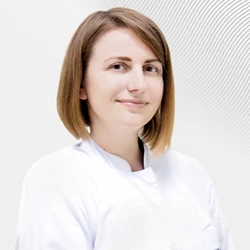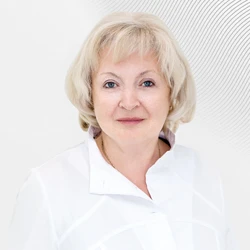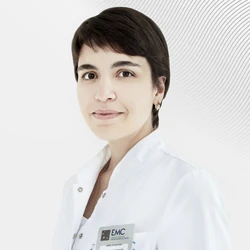Atrial septal defect
Atrial septal defect is a congenital anomaly that refers to heart defects. This group of defects is characterized by the presence of a pathological communication between the right and left atria. The pathology is quite common and occurs in approximately 25% of children over 2 years of age. However, DMPP often goes unnoticed until the age of 40-50, when severe symptoms appear that require active, in some cases surgical treatment.
What is an atrial septal defect
The atrial septal is a thin wall separating the right and left atria. Normally, a child is born with an additional hole in the atrial septum, which is called an oval window. After birth, in a healthy heart, the oval window usually closes. This happens at different ages, most often from 1 year old to 3-5 years old. The partition becomes solid. But sometimes in the process of intrauterine development, holes in the septum are not formed only in the oval fossa area, which creates an additional message between the atria. Due to this defect, part of the blood, which should participate in a large blood flow, penetrates (is discharged) from the left side of the heart to the right. This creates an excessive load on the right atrium and ventricle, which over time leads to disruption of the cardiovascular system, overload of the lungs and the development of severe complications.
Reasons
Atrial septal defect is a congenital malformation that develops during the prenatal period. The exact cause of the defect is unknown. It is assumed that most of the pathologies develop without any obvious causes (spontaneously). Often, an under-closure of the oval window with the formation of a septal defect can occur in premature infants and children who suffered from pneumonia immediately after birth. Heredity can also play a significant role, since primary and secondary DMPS occur in close relatives in the same family.
An atrial septal defect may be accompanied by other congenital malformations of the cardiovascular system, such as mitral valve prolapse, abnormal pulmonary vein junction, and others. The defect is often associated with genetic abnormalities such as Down syndrome or Ellis-Van Creveld syndrome.
Types of pathology
Atrial septal defects can vary in location, size, and number (single or multiple).
Depending on the degree and nature of septal underdevelopment, heart defects of this group are divided into the following types:
-
Primary. Such a defect occurs due to a violation of the formation of the junction of the four chambers of the heart. It is often accompanied by other malformations, such as a deformed atrioventricular valve. Primary DMPS can be large (in adults up to 3-5cm). Primary DMPP accounts for 15% of all cases.
-
Secondary. It occurs due to a violation of the closure of the oval window after birth (secondary defect of the septum of the heart). As a rule, this pathology is localized in the area of the oval fossa and has a small size. This is the most common pathology in this group. A secondary defect is diagnosed in 80% of cases.
-
Sinus defect of the superior vena cava. A rarer pathology, which is noted only in 5% of patients. The abnormal hole is located in the upper part of the partition. In this case, part of the pulmonary veins may flow not into the left atrium, but into the superior vena cava.
Other defects of this group are very rare in less than 1% of patients. This is a sinus defect of the inferior vena cava, a defect in the roof of the coronary sinus. Sometimes complex combined forms, multiple defects, and a combination of primary and secondary defects are diagnosed.
Development of pathology and complications
In case of atrial septal defect, arterial blood is discharged from the left atrium to the right. Due to the additional volume of blood, the load on the right ventricle increases significantly. In children with a small defect size, this rarely leads to noticeable symptoms and pronounced changes. However, if the defect is large, then significant overload and heart failure may occur as early as 1-2 years of age due to increased blood flow in the small circulatory system with the development of symptomatic pulmonary hypertension, and after 16-20 years of age,Patients may develop pulmonary hypertension with vascular changes in the lungs or the Eisenmenger complex.
Pulmonary hypertension with vascular changes in the lungs (Eisenmenger complex)It is a dangerous disease that is associated with irreversible vascular changes. It most often develops after the age of 30 if the defect was not closed on time. The organic obstruction of the pulmonary arterioles provokes an increase in pressure in the right ventricle and the development of heart failure. Blood discharge, then there is a shunt, changes direction if initially the blood is discharged from right to left only during certain periods (increased physical activity, cough), but gradually this discharge becomes persistent, resulting in various complications and the closure of such a defect becomes very difficult. problematic, if not impossible. Therefore, it is important to close the DMPP before the development of pathological changes in the pulmonary vessels.
The most dangerous complications of atrial septal defect are:
- Arrhythmia. Atrial fibrillation, atrial flutter, and tachycardia are conditions that lead to the development of chronic heart failure, increase the risk of thrombosis and cerebral circulatory disorders.
- Pathological embolism. Microemboli (for example, blood clots (microthrombi) from leg veins, fat droplets, air bubbles, and other microparticles) can penetrate from the right atrium into the left and further into the arterial vessels of the brain, kidneys, and extremities. This is a serious complication that can cause strokes and ischemia of other organs. Conditions for this are created, for example, when diving, trampolining or parachuting. But sometimes such a microembolism can occur spontaneously, which can be dangerous to health.
- Eisenmenger syndrome. With persistent right-left blood discharge, cyanosis (cyanosis of the skin), decreased exercise tolerance, and fatigue develop. Shortness of breath, frequent headaches, nosebleeds are possible. The risk of thromboembolism and pulmonary infarction increases.
- Infectious endocarditis. Inflammation of the inner lining of the heart occurs due to microtrauma of the endocardium, which reduce the resistance of cardiac structures to infection. Endocarditis is accompanied by polypous ulcerative lesions and systemic inflammatory reactions, posing a threat to the patient's life.
- Complications of DMPP include the development of heart failure of varying severity with the appearance of shortness of breath, palpitations, congestion and edema, and enlarged liver.
Symptoms
The disease may remain unnoticed for a long time and may not affect the patient's well-being, but may manifest itself early enough, already in the first or second year of a child's life. The severity of the symptoms depends on the size and location of the defects and, accordingly, the volume of pathological blood discharge through the defects, as well as on the patient's age and the presence of complications.
In children, the symptoms of DMPP are mild and are often associated with manifestations of heart failure. The doctor may hear a small noise associated with an increase in the volume of blood that passes through the pulmonary artery. The defect itself and the blood flow through it are not audible due to the small difference in pressure between the atria. Therefore, the diagnosis is often established only by conducting an ultrasound examination of the heart: echocardiography (ECHO KG). With a minor defect, the child often develops normally and tolerates stress well. And then the first symptoms may appear only after 10, and sometimes even after 20 years. But with a significant septal defect (up to 1-1.5cm or more), the first symptoms of pathology (signs of heart failure that affect the child's development) can be detected already in the first or second year of the baby's life. In this case, additional treatment may be necessary until the defect is closed.
Signs that may indicate a heart defect in children:
- The appearance of shortness of breath in a child at rest or during exercise (movement, feeding, gymnastics).
- Pallor of the skin.
- There is a slight lag in physical development. The child does not gain weight well, may look smaller and thinner than his peers.
- Poor exercise tolerance - the child may complain of shortness of breath, severe fatigue, a tendency to fainting and dizziness.
- Exposure to respiratory diseases. Due to the increased amount of blood circulating in the lungs, the child is prone to recurrent bronchitis and pneumonia, which are accompanied by prolonged wet cough, persistent shortness of breath and other symptoms from the respiratory system.
- During a routine ECG, signs of overload of the heart cavities and rapid heartbeat (tachycardia) are visible on it.
- Heart murmur, increased heart rate (tachycardia) that the doctor will hear.
- Chest deformity of the "heart hump" type.
- Under certain conditions, blue skin (cyanosis) may appear.
- Cardiac arrhythmias (extrasystole, palpitations, tachycardia)
Symptoms associated with atrial septal defect in adults:
- Shortness of breath, shortness of breath, especially during physical exertion or exercise.
- Increased fatigue.
- Swelling of the extremities (feet, lower legs, hands), accumulation of fluid in the abdominal cavity.
- Arrhythmias - a feeling of heart failure, sinking, or palpitations.
- Cyanosis.
- Strokes, transient disorders of cerebral circulation, and other signs of microthrombosis.
Diagnostics
A suspected heart defect may be suspected by a cardiologist at the initial appointment based on the clinical picture and the patient's survey.
Basic diagnostic methods:
- Auscultation. When listening to the heart, the doctor determines systolic noise of medium intensity and duration. Mesodiastolic murmur is also possible. Older patients may experience a slight protodiastolic murmur.
- Electrocardiogram. The ECG shows signs characteristic of an overload of the right heart.
- Echocardiography. The main diagnostic method. Ultrasound examination allows you to determine the exact location of the defect, determine its appearance, and detect additional defects.
- X-ray of the lungs and heart. It shows changes in pulmonary vessels and cardiac hypertrophy.
- Holter (outpatient) heart rate monitoring. It allows you to diagnose various cardiac arrhythmias. It can be carried out within 1-2 days (24-48 hours), and, if necessary, up to 7 days. Most often, 2 or 3 channels are recorded, but there may also be 12 channels as a regular ECG, but during the day.
- Some laboratory tests can diagnose heart failure. Tests with natriuretic peptide (BNP and NT-proBNP), studies of troponins, MB creatine phosphokinase, analysis of blood electrolytes, blood oxygen saturation and examination of the function of other organs (kidneys, liver and others) are used.
If these ECHO CGS did not allow for an accurate diagnosis or differentiation with other pathologies, then CT or MRI with contrast may be prescribed. When performing tomography in complex cases combined with a defect, these changes can be accurately visualized.
Treatment
DMPP treatment methods depend on the size of the defect and the presence of other congenital malformations of the cardiovascular system. If the pathology is small and does not cause pronounced symptoms, the patient may be advised to follow up with an annual (or more frequent, according to the situation) follow-up visit to a cardiologist.
Medical treatment does not eliminate heart disease, but it makes it possible to control symptoms (heart failure, rhythm disturbances, and others) and prevent severe complications in cases where surgery is postponed. The patient may be prescribed:
-
diuretics (including those with a combined effect, more often one or two drugs) to reduce edema and the amount of fluid in the lungs;
-
digoxin for the treatment of heart failure;
-
ACE inhibitors (capoten/captopril) for the treatment of heart failure, taking into account the fact that in some cases, and in combination with other medications, they can help close defects.;
-
beta blockers for the treatment of arrhythmias;
-
anticoagulants to reduce the risk of thrombosis;
-
other drugs, as well as their combination with those already listed, taking into account the individual symptoms of the patient, his age, and the situation.
In any case, if there is an atrial septal defect, it is always necessary to consider closing this defect. The decision on the time of closure of the defect is made individually, taking into account the size of the defect, its location (not all defects can be closed endovascularly, but some should be closed endovascularly), the symptoms of each patient, his age and;other data. Sometimes it is necessary to close a defect at an early age, and sometimes you can wait until an older age and choose a more gentle method of closing.
Nevertheless, it is possible to completely eliminate the atrial septal defect only with surgery. In the EMC clinic, surgery is performed through endovascular intervention. Due to the low injury rate and the lack of need for heart shutdown and general anesthesia (in adult patients, it can be performed under local anesthesia), it is considered the method of first choice for closing secondary DMPS.
During endovascular surgery, a catheter is inserted into the femoral vein, through which a special device, an occluder, is inserted to the heart, the diameter of which, when folded, does not exceed 2.5;mm. The doctor, under the supervision of an X-ray on the vessels, brings the occluder to the septal defect, where the device opens like an umbrella, completely blocking the opening. The size of the occluder ("umbrella" in the open state) is selected strictly individually, depending on the size of the defect itself and its characteristics. EMC has a full-size range of occluders and we can choose any required size. The technical complex itself (including, in addition to the installed occluder, the conducting system) is strictly individual and is always used in the EMC once. EMC Endovascular surgeons are highly qualified doctors who successfully perform surgical procedures of any complexity, including in adults, elderly patients, and children.
Regardless of the size, surgery is recommended for patients with significant blood loss, pulmonary hypertension, heart failure due to the defect itself, or signs of a possible paradoxical embolism (as well as after a stroke or cerebrovascular accident). However, when determining the possibility of using endovascular closure of a defect to close it, both the characteristics of the defect itself and the accompanying changes can be taken into account.
Frequently asked questions
When does the atrial septum close?
An atrial septal defect closes spontaneously quite rarely, this is possible only with small pathologies. There have been cases of self-closure of a secondary defect at the age of 2-5 years. Self-closure is more typical for the physiological opening in the atrial septal, the so-called open oval window. The oval window differs from the DMPP in its unilateral blood flow. This is a valve-type opening that all newborns have and is normally closed by connective tissue in the first years of life. If the oval window does not heal after 5-6 years, this may be considered not as a defect, but as a minor anomaly of heart development, but in this case, the need to close the defect (more often by endovascular methods) is considered. individually, especially if the patient has signs of an overload of the right heart.
At what age is DMPP operated on
The decision on the time of intervention is quite individual. If an atrial septal defect is detected in early childhood, it is recommended that the child undergo surgery in childhood, since it is at this age that it is most easily tolerated. Children recover quickly, and after a few days they forget about the intervention, discharge from the clinic usually takes 1-2 days. Further, during the first months, it is recommended to reduce active sports activities somewhat, but the child can lead a normal lifestyle, go to school and travel.
If a defect is detected in an adult, the need for surgery is also always considered. Surgical removal of DMPP has the best effect in young patients (up to 25 years old). In adults, complete restoration of the functional activity of the heart and lungs is not always possible, the atrial walls undergo permanent changes, so the risk of arrhythmias persists. Nevertheless, surgery at any age can significantly improve the patient's quality of life: it reduces shortness of breath and improves exercise tolerance.
In addition to surgery, patients may need additional treatment for rhythm disorders after surgery, such as medication or radiofrequency ablation.
How many people live with DMPP
Back in the 90s, the life expectancy for such patients did not exceed 50 years. However, according to recent studies, when the defect is closed to 25 years, the life expectancy of patients with DMPP is similar to healthy people from the control group. Periodic examinations will be necessary for all patients, but they do not take much time. Some patients live up to 80 years or even more after surgery without encountering significant pathological (including repeated) vascular events. Without treatment, the average life expectancy is still 36-40 years on average.
At the EMC clinic, the diagnosis and treatment of heart disease pathology in children and adults is carried out by doctors of the highest category, candidates and doctors of medical sciences, professors in the specialty, guided by the most modern medical protocols, extensive personal experience and withusing the best equipment. You can make an appointment for a consultation and ask any questions about our services by phone +7 495 933-66-55.
Make an appointment for a consultation and we will contact you for more details
Why the EMC
The first and only clinic in Russia, created in the image of the world's leading clinics
EMC is a multidisciplinary center offering patients a high level of medical services and a personalized approach
Worldwide recognition and awards
 Learn more
Learn more
Worldwide recognition and awards
 Certificates and licenses
Certificates and licenses
.webp)
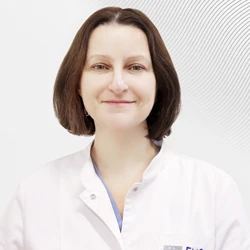
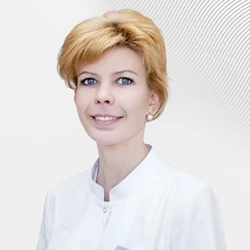
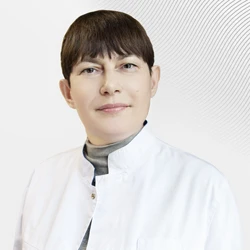
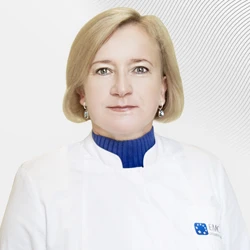
.webp)
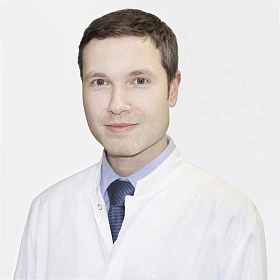
.webp)
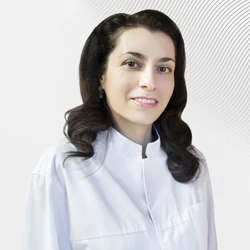
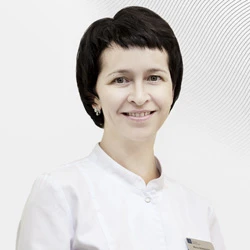
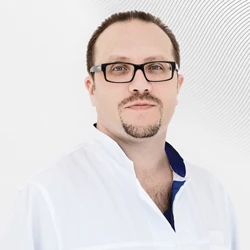
.webp)
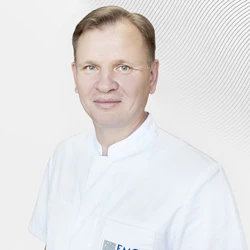
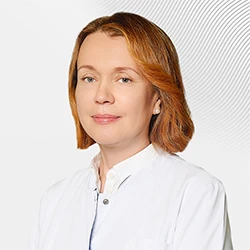
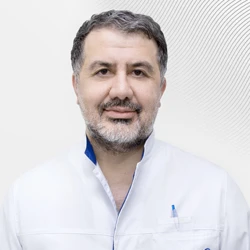
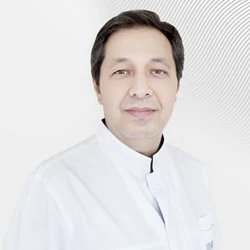
.webp)
